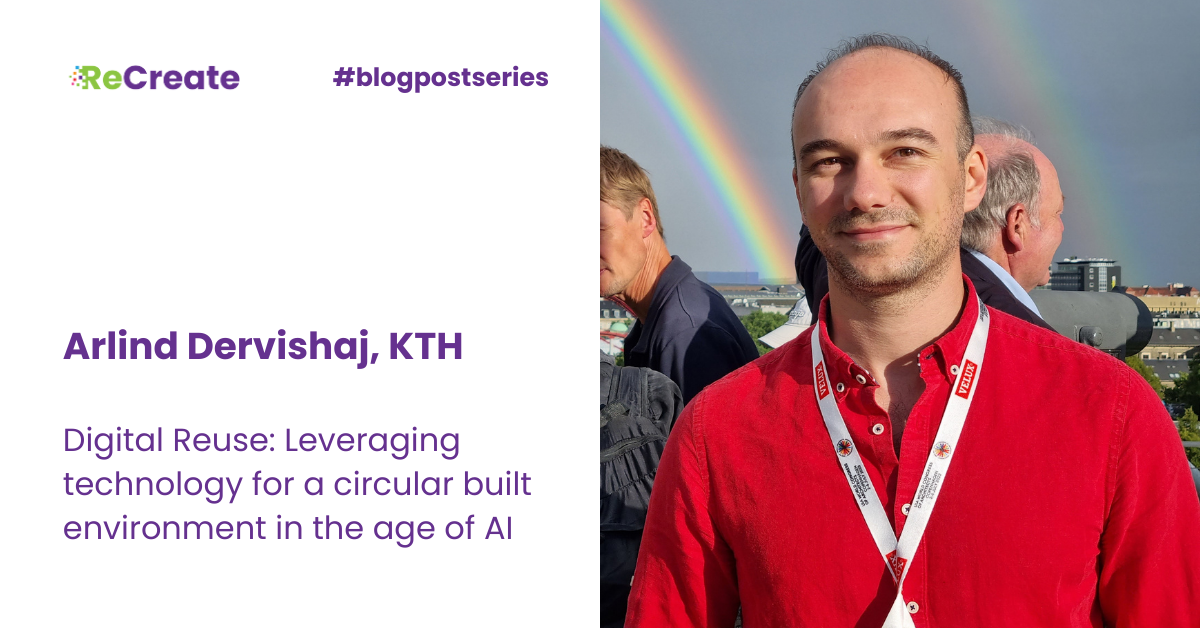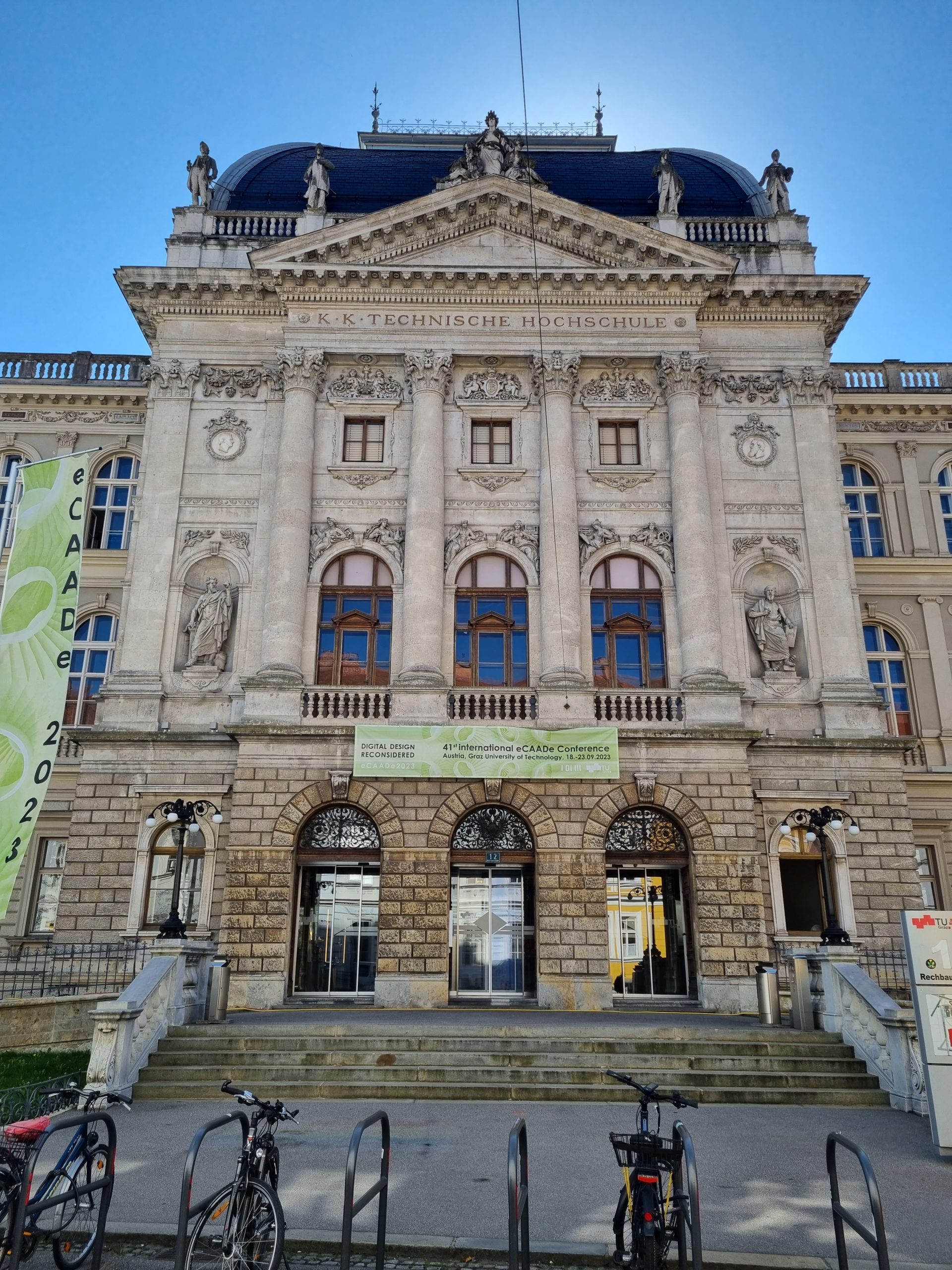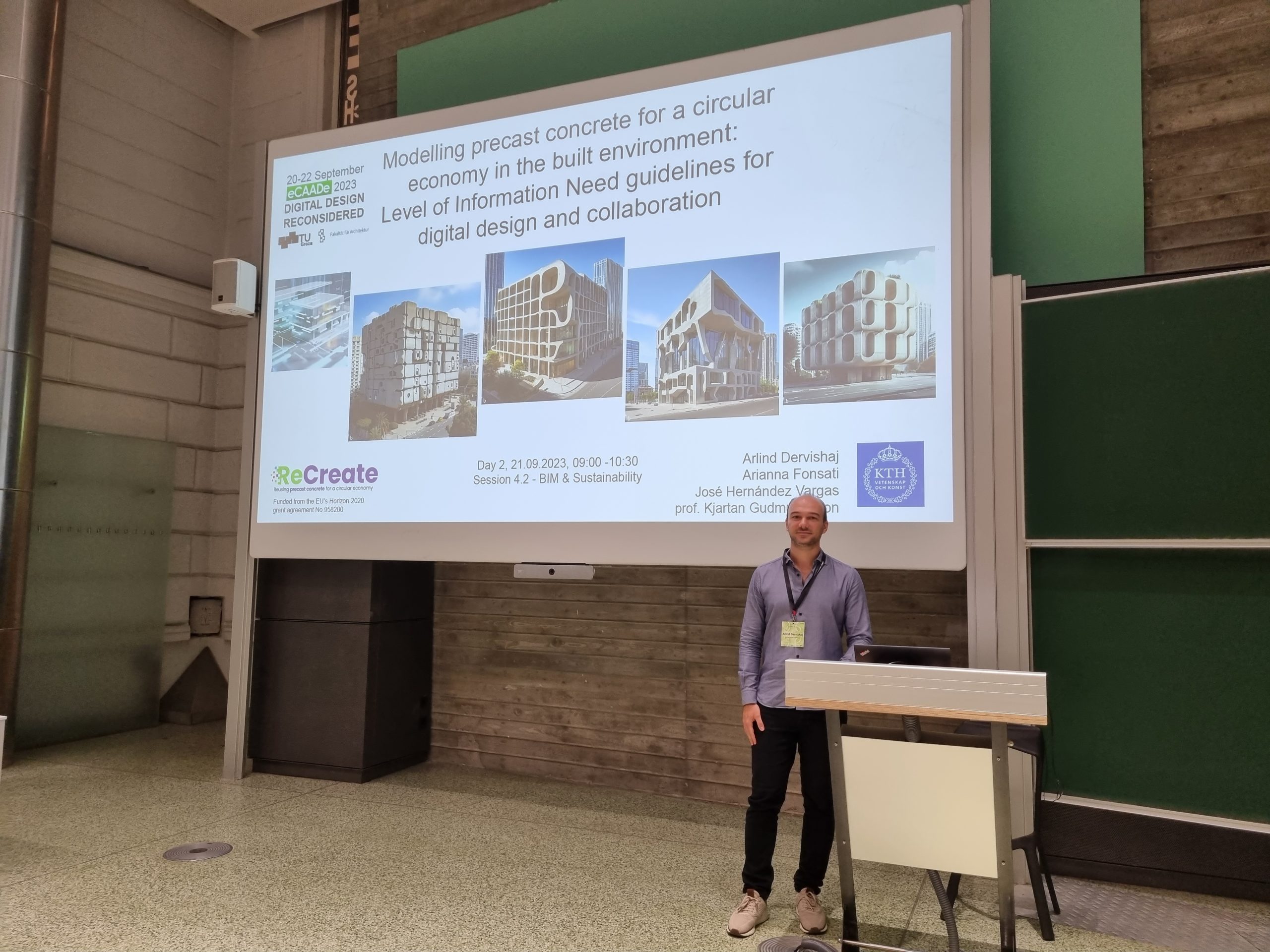
Arlind Dervishaj, architect and doctoral researcher at KTH Royal Institute of Technology
The use of digital tools for the design of buildings has become a common practice for architects and engineers alike, commonly referred under the umbrella term digital design. The range of digital tools at our disposal and their utilization has been growing, with reference to Building Information Modelling (BIM), environmental design tools, computational design plugins, and optimization algorithms. Additionally, 3D printing, robotic fabrication, virtual reality, and Artificial Intelligence (AI) are becoming more commonplace not only in research environments but also with practical applications within the architecture and engineering fields. Despite these advancements that have made it easier to design and assess the sustainability of projects, buildings remain a major contributor to climate change, responsible for 37% of global carbon emissions, half of all extracted raw materials, and waste generation due to construction and demolition activities. In light of these challenges, the circular economy concept presents a promising solution, with digital technologies playing a crucial role as enablers. The importance of reevaluating the relationship between design and the digital became the focus of the 41st eCAADe (Education and Research in Computer-Aided Architectural Design in Europe) conference hosted at TU Graz under the theme Digital Design Reconsidered.


At eCAADe 2023, I presented a refereed paper, with co-authors Arianna Fonsati, José Hernández Vargas, and prof. Kjartan Gudmundsson [1]. The paper is titled Modelling Precast Concrete for a Circular Economy in the Built Environment with subtitle Level of Information Need guidelines for digital design and collaboration. This was also the first presentation in the eCAADe session on BIM & Sustainability. I kicked off my presentation by captivating the audience with striking examples of AI-generated buildings crafted from reclaimed concrete elements, setting the stage for an important question to follow.
Can we design buildings with reused elements simply with a text prompt and AI or is there more to consider?
Before the design process, the practice of reuse involves a series of essential steps, which encompass, among other things, the identification of suitable buildings and components for reuse, the process of deconstruction, the management of storage, and the implementation of quality assurance measures. Reliable and up-to-date information is crucial in supporting designers and stakeholders in making decisions for circular construction. Various data capture methods for buildings exist to facilitate their identification and potential reuse. These methods encompass technologies such as laser scanning, photogrammetry, scan-to-BIM workflows, and machine learning algorithms. Examples of the latter include identifying materials and components at urban and building scales, and some even automate the creation of 3D models from point clouds.
Nevertheless, a substantial gap remains within the literature with relevance for practice concerning the specifics of required data and the process of sharing and requesting information to enable reuse and collaboration of different parties. To address this challenge, we developed a set of digital reuse guidelines tailored specifically for precast concrete. These guidelines are based on the Level of Information Need (LOIN) standard EN 17412-1:2020 [2], and are informed by our experience in the ReCreate project, which includes construction pilots conducted in Sweden (Swedish pilot at the H22 City Expo) and in partner countries. Our study not only embraces the EN 17412 standard but also takes it a step further by extending its applicability for digital reuse in circular construction. These guidelines are designed to enhance the reliability of information across the reuse process and construction cycles. They introduce innovative concepts, such as the creation of digital templates that evolve into digital twins of reused precast elements. Furthermore, they can be used for specifying information requirements for reused as well as for newly produced elements. Additionally, as part of our comprehensive approach, we have included a comparison of the geometrical modelling aspects of LOIN in two widely used CAD and BIM software platforms, Rhino and Revit.
Currently, our ongoing research within the ReCreate project continues to explore and expand upon various aspects that can relate to the LOIN framework. As an example, another recent paper authored by me, José, and Kjartan was presented at the 2023 EC3 & 40th CIB W78 conference in Crete, Greece [3]. This paper explores the timely theme of tracking and tracing building elements, where more background information can be found in the literature [4], [5]. We present a novel digital workflow for modelling various tracking tags in the BIM model such as QR codes, Radio Frequency Identification (RFID), and Bluetooth. Moreover, we present promising results from laboratory tests that, arguably for the first time, explore the utilization of Near Field Communication (NFC), which is a subset of RFID, and its integration with Bluetooth technology.
More facets on the topic of reuse are being investigated within ReCreate that will further demonstrate the applicability and potential of digital reuse in creating a circular built environment. Our research encompasses a wide spectrum of considerations, including data capture and sharing methods, material passports, destructive and non-destructive testing of concrete structures, and innovations in the design processes. These ongoing efforts aim to advance sustainability and circularity in the built environment through the integration of digital technologies.
References:
[1] Dervishaj A, Fonsati A, Hernández Vargas J, Gudmundsson K. Modelling Precast Concrete for a Circular Economy in the Built Environment. In: Dokonal W, Hirschberg Urs, Wurzer G, editors. Digital Design Reconsidered – Proceedings of the 41st Conference on Education and Research in Computer Aided Architectural Design in Europe (eCAADe 2023), Graz: eCAADe, TU Graz; 2023, p. 177–86. https://doi.org/10.52842/conf.ecaade.2023.2.177.
[2] European Committee for Standardization (CEN). Building Information Modelling – Level of Information Need – Part 1: Concepts and principles (EN 17412-1:2020), 2020.
[3] Dervishaj A, Hernández Vargas J, Gudmundsson K. Enabling reuse of prefabricated concrete components through multiple tracking technologies and digital twins. European Conference on Computing in Construction and the 40th International CIB W78 Conference, vol. 4, Heraklion: European Council on Computing in Construction; 2023, p. 1–8. https://doi.org/10.35490/EC3.2023.220.
[4] Jansen M, Gerstenberger B, Bitter-Krahe J, Berg H, Sebestyén J, Schneider J, et al. Current approaches to the digital product passport for a circular economy: an overview of projects and initiatives 2022;198. https://doi.org/10.48506/OPUS-8042.
[5] European Commission. Transition pathway for Construction 2023. https://ec.europa.eu/docsroom/documents/53854 (accessed March 17, 2023).

